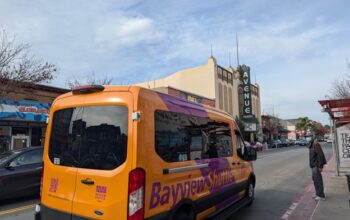What jerks. The data shows the safest place for kids are in a classroom. Now the CDC is setting up color codes, so few can understand. So confusing, difficult to argue with it—especially since the data is limited and VERY questionable.
Here is a solution—open the schools and use a color code to see which CDC offices should be allowed to be open. Until parents revolt against the abuse of their children—kids will be used as hostages to a government that abuses all of us. Stop the abuse!
CDC issues color coded guide for school reopening but could create more confusion in California

Louis Freedberg, EdSource, 2/11/21
As educators around California await further guidance from Sacramento on school reopening, the Centers for Disease Control and Prevention issued a color-coded guide to help school districts decide under what conditions they could offer in-person instruction.
The CDC guidance bears a striking resemblance to what California already has in place. But it could generate more confusion because the color codes it has in mind don’t match California’s four-tier system.
In one of the strongest statements on this topic yet from the CDC, the guidance states that “K-12 schools should be the last settings to close after all other mitigation measures in the community have been employed, and the first to reopen when they can do so safely. Schools should be prioritized for reopening and remaining open for in-person instruction over nonessential businesses and activities.”
Despite this strong statement, the new guidance leaves crucial decisions around vaccinations and testing as voluntary strategies that could be implemented at the discretion of local communities.
Reinforcing what Gov. Newsom has been saying, the CDC says vaccinations “should not be considered a condition for reopening schools for in-person instruction.” It also does not require schools to do asymptomatic testing of staff and students, although it says that schools “may elect” to do so “as a strategy to identify cases and prevent secondary transmission.”
While California educators try to digest the new, lengthy CDC guidelines, they are also awaiting the outcome of negotiations between Gov. Newsom and the state Legislature regarding efforts to come up with a more robust school re-opening plan. Key elements of Newsom’s “Safe Schools for All” plan are in limbo, after coming under intense criticism from a range of sources.
A week ago, Newsom indicated that a revised strategy would be issued within days. But sources say that the negotiations have been intense, and difficult. As of 1 p.m Friday, no announcement had been made, and none appears to be forthcoming today.
The new CDC guidance for school reopening envisions a phased in approach based on red, orange, yellow and blue tiers. In contrast, California’s tiers are purple, red, orange and yellow. Unlike California’s tiers, in which purple is the most restrictive category, and red somewhat less restrictive, red would be the most restrictive level under the CDC strategy.
Under the CDC plan, schools in the blue and yellow tiers could open for “full-in person instruction,” along with sports and extracurricular activities, as long as strict social distancing and masking practices are followed. In the orange tier, K-12 schools could also open, but in a more restricted way — either by having hybrid instruction, with some classes offered via distance learning and others in-person, or through what the CDC calls “reduced attendance.”
In the red tier, middle and high school students would have to remain in a distance learning mode, unless schools “can strictly implement all mitigation strategies.” All sports and extracurricular activities would have to be carried out virtually.
It will take time and effort to sort out the differences in how the CDC and California define their various color codes.
The CDC uses similar measures to California in determining what color a district is assigned — the average rate of new infections and the test positivity rate. But the CDC’s definitions are slightly different. The CDC, for example, takes into account the weekly rate of new cases, while California looks at daily cases. A school would be in the CDC’s red tier, equivalent to California’s purple tier, if a community has more than 100 weekly new cases per 100,000, and a positivity rate of over 10%. Under California’s system, a school is in the purple zone if there are more than 7 new cases per day, and a positivity rating of 8%.
In another significant development, the California Dept. of Public Health has issued long-awaited information on the extent to which local districts are offering in person or remote instruction. The maps show that many districts are offering in-person instruction, but far fewer are doing so for middle schools, and even fewer for high school students.



